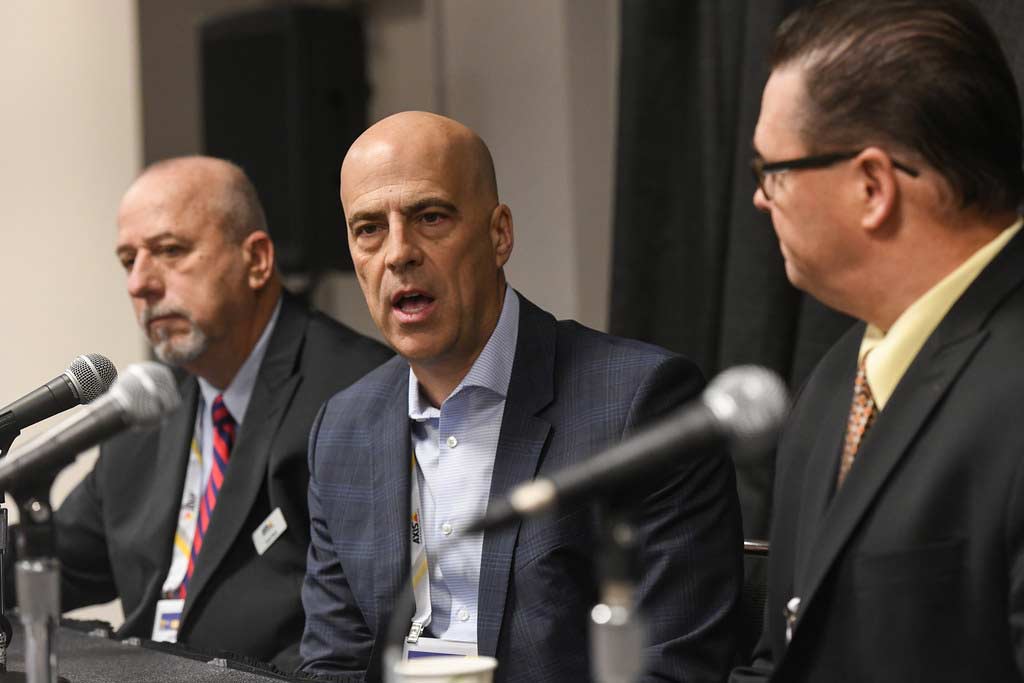The Convergence of Physical Security/IT and Its Return on Security
By Jenna Hardie
There’s an inherent trend in the security industry these days: security solutions are providing value to the entire enterprise, and in turn, getting budget buy-in from non-traditional business units. But that means some significant shifts in how security manufacturers and integrators interact with end-users and organizational leaders.

In a recent panel discussion during ISC East 2019, Identiv weighed in on this trend, stressing the idea that decision-makers must consider far more than security when investing in solutions:
Define needs.
So many integrators and manufacturers approach customers from the lens of wanting to sell them a solution. Obviously, this is the end goal. But this approach is the wrong way to go. In order to truly form a partnership and provide value for their investment, these entities need more. “You have to ask questions of your customers to find out where their pain points are. You can’t start with a solution; you have to start with a problem, then identify how you can best work to solve the issues they face,” said Scott Sieracki, Identiv VP Sales.
Ditch the siloed approach.
Traditionally, security has operated in a vacuum. Until IP video really made its way onto the scene, IT and security operated very independently of each other — and sometimes as a result, incorporating networked security technology was not as seamless as it needed to be. In recent years, the manufacturers that are most successful have found a way to unify with the IT teams to benefit the entire enterprise. “This convergence shouldn’t be a hurdle, it should be inherent to what we do,” said Sieracki. “Security manufacturers must be able to evolve to incorporate IT best practices into their products and work with others in the industry to achieve this level of integration.”
Start thinking like IT.
As the convergence of security and IT departments continues, it becomes more and more important for security manufacturers to align accordingly. “What we’re finding is that IT behaves very differently and to truly meet the needs of the organization, we have to behave similarly, taking cybersecurity and network connectivity seriously,” Sieracki said. For example, in today’s enterprise, an organization’s physical access control should adhere to the same standards and deployment models than any other IT application would. The benefits are numerous: when any cybersecurity or operating system-level patches need to be installed, the work can be done on the server in real-time, under the same policies and practices as other IT systems, and the IT department can trust that the security of the network is top of mind. In that, the value exists.
Stress more value.
One of the biggest hurdles for many organizations in capital investments in updated or new security technology is budgetary, which is why the value is at the core of many C-level conversations. The bottom line is: if you can provide the value, they will find the money. One way to achieve value is in the gathering of data for use in delivering more business intelligence to an organization. For example, using video and access control data to determine how many people are in a building and control HVAC systems or lighting in an effort to save costs provides significant value for facility managers. The cost savings can also be communicated to an organization’s CFO, which demonstrates a value add. This return on security investment can really drive decision-makers to think bigger as security solutions do more to deliver to each sector of the business.
When it comes down to developing security solutions for the customer, the total cost of ownership (TCO) and value are at the forefront of many conversations with customers. As a result, it is critical to align with customer goals to work effectively together in a cohesive approach to security.
Want to learn more about how Identiv works with IT teams?
Call +1 888.809.8880 or contact sales@identiv.com.
